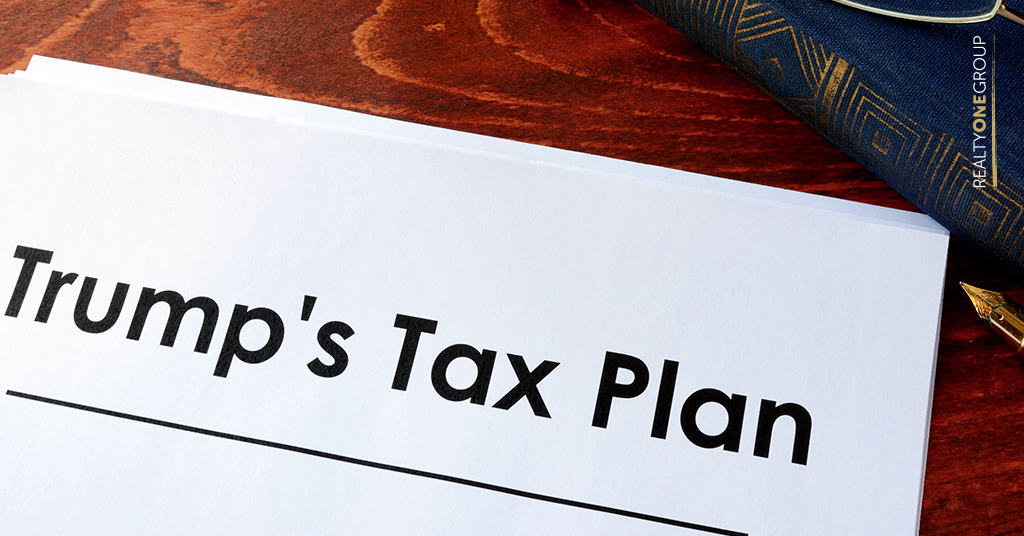
At the start of every year, Analysts and Economists attempt to determine what sort of year it is going to be in the world of real estate. Already being one month into 2018, it looks like it is going to be another year for the Seller. While the demand for housing continues to grow at an unbelievable rate, inventory levels are at historic lows as well. It seems that the Sellers yet again will have the easier go in 2018, and unfortunately for the Buyer, they haven’t had their year since 2012 (the launch of the home price recovery). It appears there is a universal consensus to one of the driving factors behind why the Sellers have the upper hand yet again. Millennial's. First Time Millennial buyers are jumping into home ownership at a rate like never before. But because inventory levels are so low and millennial demand is so high, it results in an interesting situation with mortgage rates, which have risen to about a 4.5% average at the end of 2018. This, combined with Trump’s new tax plan, make 2018 a peculiar year. 
Millennial's…Why Now?
The time has come for Millennial's to take the dive into home ownership, whether or not this is the best time to do it, it’s inevitable. The demand for housing is skyrocketing in most markets and, with the scarcity of homes, it is allowing institutional and private sellers to keep home prices high. Chief Economist of Trulia, Ralph McLaughlin, has stated, “Healthy job and income growth has fueled demand for houses, including from more Millennial first-time buyers. At the same time, many Baby Boomers are staying in their homes instead of selling and flocking to retirement havens. Investors- who buy houses to rent out or flip for a profit rather than occupy- also have held onto their property, reaping lucrative rents and sharp price gains. And new home construction has been curtailed by shortages of workers and available lots.” Despite worker shortages, home builders are still expected to ramp up construction to meet the high demand. Housing starts are projected to rise 2.2% this year to 1.3 million. This means more houses could come onto the market as future buyers pull back. A large factor behind the pull back is Trump’s new Tax Plan and the implications it holds for real estate. 
The New Tax Plan
On the surface, the new tax plan may look like it is beneficial to new buyers and positively impacts people in higher priced markets. But the plan has some serious holes. To start, the mortgage interest deduction cap has been changed from $1 million to $500,000, which makes owning a high-priced home a lot more expensive under this new law. This means the wealthy could avoid home ownership entirely, especially in desirable areas like California and New York. Instead, they could decide to rent, which will continue to inflate rental prices, especially in the Landlord’s World we currently live in. The bill also does not entirely hash out a homeowner’s journey. The new bill will put the $500,000 cap on new buyers, but keeps the $1 million cap for existing homeowners. This is an attempt at being fair, but in reality, it does much more harm than good, considering the rate at which people move. If someone purchases a home for the first time between $500,000 and $1 million, they can deduct all of the mortgage interest and most of their payments for the next 10 years. However, when they decide to move (which is very likely) they will no longer be considered a ‘new homeowner’ and will move into the $1 million bracket, meaning they will not be able to deduct as much interest as before.
What does this mean for the sellers, buyers, agents and brokers?
Simply put, it’s not good. Let’s break down the thought process for current and future homeowners. If someone sells their home and buys something that is either the same price or more expensive, they will not be able to deduct as much of their interest. Why move? Currently, they can deduct all of their mortgage interest and most of their payments for the next 10 years. Solution: they stay put, and when they stay put, the person that was going to buy their house also stays put. And the person whose house they would have moved into now stays put. Where are all the agents in all of this? They aren’t making any transactions. To sum it up, this new tax law is bad for sellers, buyers, agents, brokers, everyone.
So, then how is it a year for the Seller?
Steve Cook, a real estate communications consultant at commsconsulting.com has stated, “The inventory drought will continue to be enough of a factor to keep supplies below normal. Most markets will continue to be sellers’ markets, especially for entry-level homes, hotter markets and where prices are high and new construction is costly, like the Pacific Coast. Luxury and premium markets will be more evenly split between buyers and sellers.” Although, inventory levels are low, and it may push buyers who might be on the affordability line out of the buyer pool, the boomerang buyers will make up for the loss of potential buyers. Boomerang Buyers are former homeowners who have gone through a short sale, foreclosure, or a bankruptcy in the past few years, and have been saving for the down payment and the expiration of the waiting period in order to qualify once again for a mortgage. The National Center for Policy Analysis estimates that as many 10 million Americans were forced into foreclosure when the housing bubble burst. This year, the effects of the Great Recession will finally ease for about 1.5 million of these Americans. This should balance out the low inventory levels and higher priced homes to make 2018 an interesting year, but a sellers’ year nonetheless.  It’s safe to say that change has hit the real estate industry hard. Millennials are stepping into the homeowner’s market at an unbelievable rate. The new tax plan has made an everlasting impact on the industry, causing buyers, sellers, and real estate professionals to shift their tactics. Boomerang Buyers are pouring back into the buyer’s pool, finally coming off the housing bubble burst. The more desirable areas (like California and New York) will begin to see a shift in power from the seller to the buyer. However, we can safely say that 2018 will still be a year for the seller…for now.
It’s safe to say that change has hit the real estate industry hard. Millennials are stepping into the homeowner’s market at an unbelievable rate. The new tax plan has made an everlasting impact on the industry, causing buyers, sellers, and real estate professionals to shift their tactics. Boomerang Buyers are pouring back into the buyer’s pool, finally coming off the housing bubble burst. The more desirable areas (like California and New York) will begin to see a shift in power from the seller to the buyer. However, we can safely say that 2018 will still be a year for the seller…for now.



